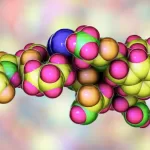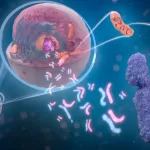Kolkata, India — A groundbreaking study by scientists at the S.N. Bose National Centre for Basic Sciences has shed new light on the intricate process of protein folding and unfolding, potentially revolutionizing treatments for neurodegenerative diseases such as Alzheimer’s and Parkinson’s.
The research team, led by Dr. Shubhasis Haldar and his student Deep Chaudhuri, employed a cutting-edge technique known as covalent magnetic tweezers to meticulously observe the folding and unfolding behavior of individual protein molecules under varying conditions. Their findings, published in the prestigious journal Nanoscale by the Royal Society of Chemistry, have significant implications for the development of novel therapeutic strategies.
The study primarily focused on the interaction between protein molecules and osmolytes. Osmolytes are small molecules that play a crucial role in helping proteins maintain their structure and function under stressful conditions. The researchers explored how these molecules stabilize proteins and prevent them from misfolding, a process that is pivotal in the onset of various diseases.
“Osmolytes are essential for cellular survival under stress, as they stabilize proteins and prevent misfolding,” explained Dr. Haldar. “Misfolded proteins cannot perform their functions properly, leading to a range of diseases. Understanding how osmolytes maintain protein stability opens up new avenues for drug development.”
The team’s investigation centered on a protein called Protein L and its interaction with two specific osmolytes: Trimethylamine N-oxide (TMAO) and trehalose. Their findings revealed fascinating insights into how these osmolytes affect protein stability.
At higher concentrations, TMAO was found to significantly enhance the strength of Protein L, making it more resistant to unfolding. Notably, at concentrations up to 1M, TMAO had minimal impact on the unfolding force of the protein. However, at 1.5M, the unfolding force increased dramatically, indicating a strong interaction between TMAO and the folded state of Protein L.
“This suggests that TMAO helps the protein remain folded and stable,” the researchers noted. “Given that high levels of TMAO are linked to heart diseases, understanding its interaction with proteins could lead to improved treatments.”
In contrast, trehalose was observed to stabilize the unfolded state of the protein, highlighting the diverse effects different osmolytes can have on protein stability. These findings not only enhance our understanding of how osmolytes function but also provide a foundation for designing better drugs to treat neurodegenerative diseases and other conditions associated with protein misfolding.
The implications of this study are far-reaching, offering new hope for the development of therapies targeting diseases that arise from protein misfolding. As the global population ages and the prevalence of conditions like Alzheimer’s and Parkinson’s continues to rise, these insights could pave the way for more effective treatments, improving the quality of life for millions.
For more information, please refer to the full study in Nanoscale.












